Side Saddle Trees
We are no longer building saddle trees, but we have two videos about how Western saddles fit horses available on our westernsaddlefit.com website.
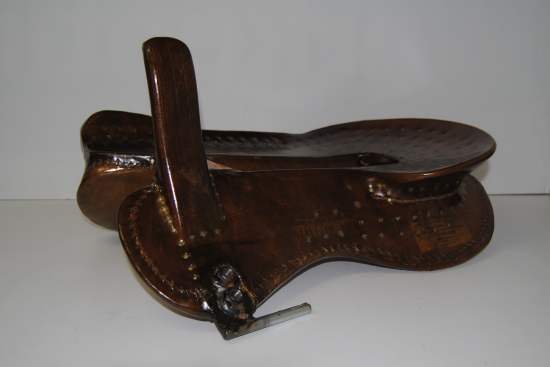
We shipped out another side saddle tree a few weeks back. We have been building side saddle trees since the summer of 2009 and this is the tenth one we have built to date. The bottom of a side saddle is the same as a regular saddle in terms of fit, so that hasn’t changed. But learning how the top of a side saddle is supposed to function and then building something that will work well has been quite the education – and we are still learning. We also had to completely refigure how attach the parts of the tree together and keep the same correct relationship between the bars because these are built completely different than “normal” Western saddle trees. One thing we have found is that there is no such thing as a “standard side saddle”. The designs have evolved and changed a lot over the years and vary depending on where the saddle was made. In fact, it is pretty tough to find side saddles that are the same until you get to the age of production made saddles. They really do tend to be individualistic saddles!
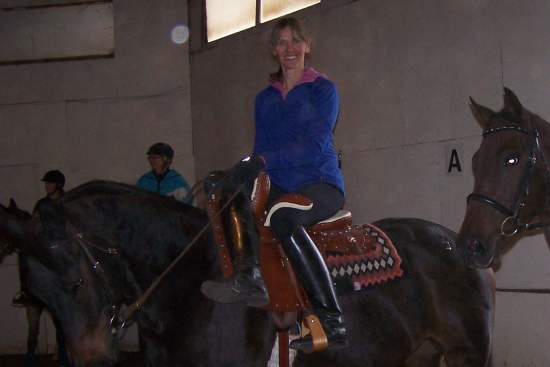
(Picture courtesy of Betty-Lynn Tattersall. Thanks, Betty-Lynn!) We have learned that the rider is supposed to sit with their hips even across the back of the horse. The right leg goes forward pretty much along the midline (though of course it starts to the right at the hip) and the knee hooks around the main horn. This keeps the rider’s weight as centered as possible on the horse. The left thigh is more horizontal than when riding astride and the foot goes in the one stirrup. The leaping horn, which curves down, goes over the top of the left leg just above the knee. If there is any question of security, the rider just squeezes their legs together to hold onto the two curved horns. It is apparently a very secure seat. Prior to the leaping horn being invented in the early 1800’s, the ladies pretty much went for walks on their horses. With the leaping horn, they say you can do almost anything in a side saddle that you can do astride. Tall jumps are not a problem. I wonder if anyone has tried cutting?
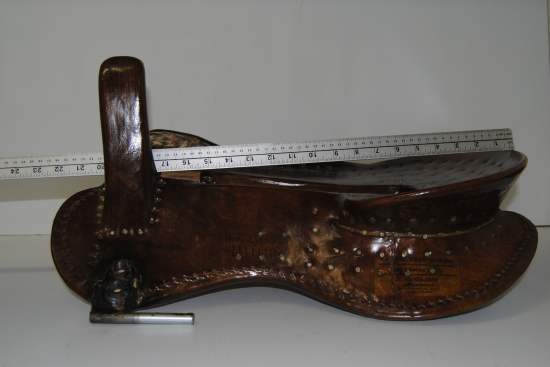
The seat is measured from the back of the cantle to the front of the main horn. This corresponds to the distance from the back of the knee to the back of the rider’s seat.
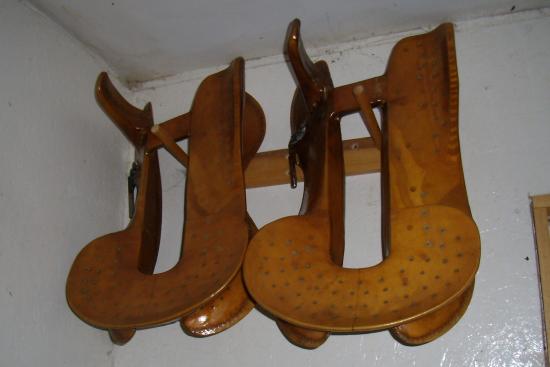
People used to be smaller and a lot of older side saddles are 18 to 19 inches. Now 20 inches is a fairly small seat and a lot are 21 inches or more.
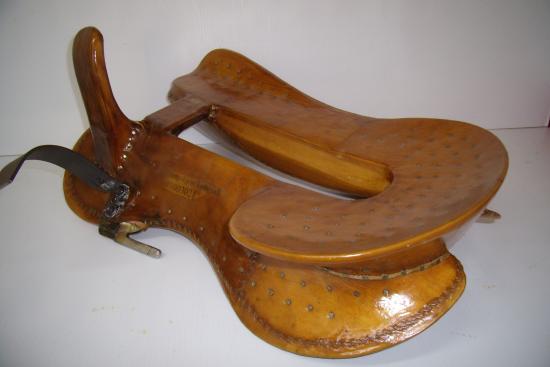
The cantle is flat because you sit on it rather than ahead of it. For us, this meant that all the angles, etc. that we cut on the bars for the cantle attachment had to be figured out and changed. And, of course, the cantle itself is totally different. It is much wider because it corresponds to the width of the rider’s hips. Most are 14" to 15” wide. How much rim is around the edge varies a lot depending on if the saddle is “English” or “Western” and on personal preferences.
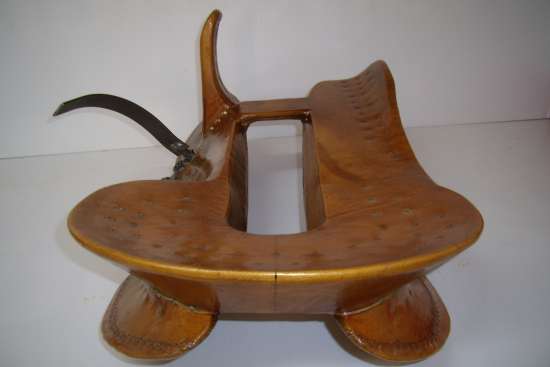
When we first discussed building a side saddle, it was stressed to us that the cantle be flat side to side. Now to us who didn’t know how some side saddles are made, that would be a given. But if you look at pictures of different side saddles available today, you can see that some slope to the left. Apparently this not only tilts the saddle to the left on the horse – a bad thing, of course – but also positions the rider improperly so they have to lean right to compensate.
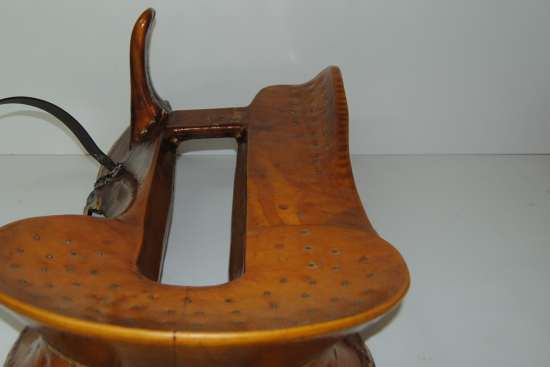
Because the right leg is supported pretty much down the center of the saddle, the tops of the bars, or whatever is built on the tops of the bars, need to be flat side to side as well. This took some trial and error to work out because the side board is added to the top of the right bar while the left bar is made very similar to a normal saddle bar without the seat carved away. Because the side board is weight bearing yet relatively thin, we build them from laminated Baltic Birch plywood. The function of the “horn” on the front tip of the side board is to stop the leg from moving too far to the right but practically, it is often a ways away from the leg. If you research side saddles, you will see that the shape of the front of the side board really varies. Sometimes it is curved in. Sometimes it is really large. Sometimes it is very small. There is even an example where a roping horn is attached and the owner worked cattle side saddle!
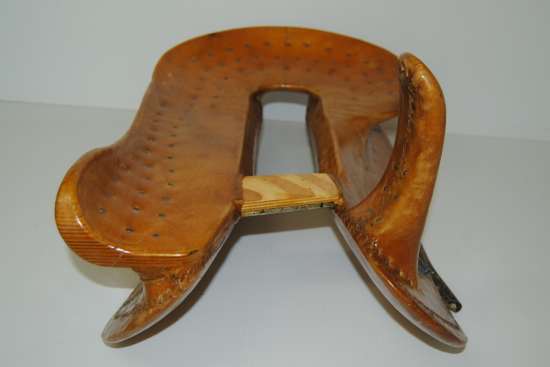
So how do you connect the front of the bars when you don’t have a fork? This is where the metal work comes in. A lot of trees we have seen have metal pieces crossing the withers and attaching to the bottom of the bars without being inset into them. Although there are panels or padding underneath the bars, we still weren’t happy with the idea of having something that wasn’t smooth under the bar for the horse’s sake. So Rod devised a way to inset a metal strip which holds the bars at the right width and angle into the tops of bars. This metal bar also acts as support for the “safe” of the side saddle which goes across the front of the saddle. We add wood on top so the saddle maker can nail into it if they want to. We have both rawhided that metal piece and left it bare. Leaving it bare gives the advantage of that extra 1/8” or so more clearance between it and the horse and that may be important in some cases.
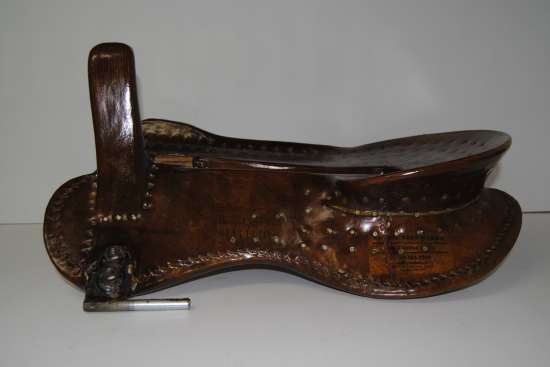
The request has also been that the tree be flat from front to back so the rider’s leg is level. This poses a problem as horses have withers that go up and there needs to be support for the rider’s leg at the front of the saddle too. If you look at old side saddles and the charro side saddles currently being used, they all slope down from the withers. This places the rider’s weight farther back on the horse, but it clears the withers on the taller withered horses, which is critical for fit. If the saddles are used on rounder backed horses with flatter withers, clearing them with the metal bar is a lot easier.
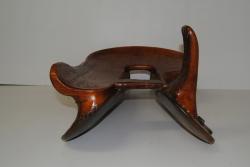 |
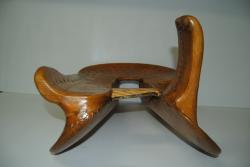 |
We have played around a bit with the positioning and shape of the main horn, based on our customer’s requests. If the center of the right leg is over the center of the horse, then the distance from the center to the inside of the horn would match the radius of the leg when it is in the proper position. This means people with smaller legs need the horn positioned more to the center than those with larger legs. This can be done by moving the horn on the bar, shaping the horn with more or less curve, or both. It is good to have some curve to the horn, but it can’t be too tight or the leg won’t fit under it well. As well, the angle of the horn relative to the centerline can affect rider comfort.
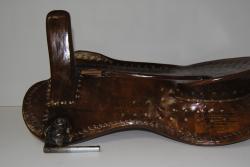 |
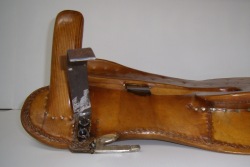 |
We have also experimented, based on input from our customer, as to where the leaping horn is positioned relative to the main horn, and where the stirrup bar is positioned relative to both horns. We have also used both English stirrup hangers and straight bar hangers for the stirrup. The English stirrup hangers are safer since they have the flip up end that will hold the stirrup leather from coming off backwards with only a little pressure, but flip open and let it come off if the rider falls and is hung up. The problem with using always them is that they are too short for the wider stirrup leathers needed for Western type side saddles. That is where we use the straight bars, though something like a long Aussie stirrup hanger would work well.
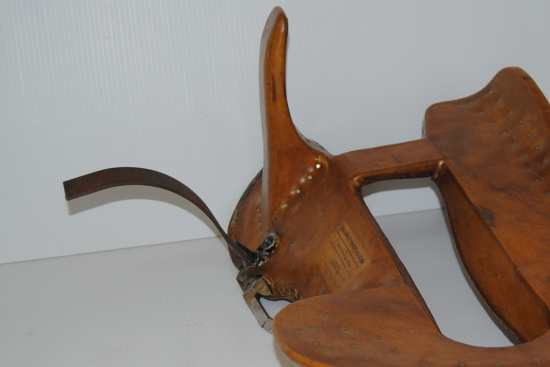
Getting the hardware to attach the leaping horns took some sourcing, since they are reverse thread nuts and bolts. This is for safety reasons. If they were normal thread, then the leaping horn would become loose if the rider’s leg came up and squeezed on the horn in case of emergency. This way, the horn gets screwed in tighter. There are two nuts on the tree to give the rider an option for the best placement of the leaping horn based on her leg length and position. The bend on the horn is made to fit the rider’s leg properly and our customer prefers to do that themselves. We bent the first couple we built but since then have been sending the bars out straight with the screw welded on in the proper place.
So that is where we are at the moment in our side saddle tree journey. We know we have lots more to learn, but we feel we are currently turning out high quality trees that meet our customer’s needs. We now know how to make changes as needed and are willing to do so. Our customer, Betty-Lynn Tattersall, has been wonderful, teaching us about the function of the side saddle and working with us as we develop the designs that work the best. We also want to thank Lillian Chaudhary for her input, especially in the early stages of our research.
